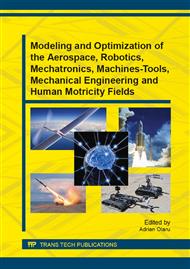p.40
p.49
p.57
p.66
p.72
p.78
p.84
p.91
p.102
On the Hybrid Combustion Instability
Abstract:
In the present paper, a combined method of large eddy simulations for non-premixed combustion in a turbulent flow coupled with proper orthogonal decomposition of instantaneous velocity, pressure and temperature fields is developed in order to identify the effect of coherent structure and to obtain a reduced order model for control model. First we investigate the reacting flow using Large Eddy Simulations technique. This physical model is pertinent to internal flows inside the hybrid rocket motors. The turbulence-combustion interaction is based on a combination of finite rate/eddy dissipation model applied to a reduced chemical mechanism with four reactions. Next, the paper refers to the derivation of a Reduced Order Model (ROM) for the same problem, based on the Proper Orthogonal Decomposition (POD) technique. ROMs are used to obtain fast and accurate results, needed in the areas of flow control. The flow and thermal fields obtained with ROMs are compared with the ones obtained from the full simulation and an analysis on the number of modes required to achieve the desired accuracy is presented. Finally, a static control technique is proposed.
Info:
Periodical:
Pages:
72-77
Citation:
Online since:
June 2014
Authors:
Keywords:
Price:
Сopyright:
© 2014 Trans Tech Publications Ltd. All Rights Reserved
Share:
Citation:


